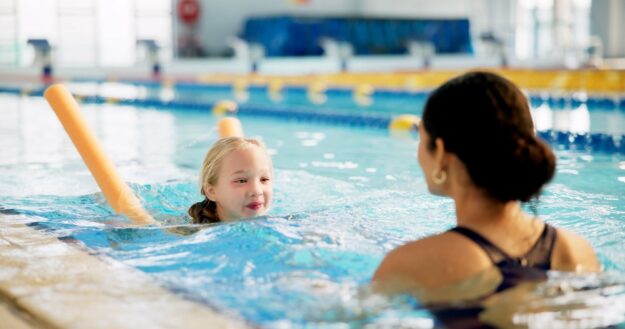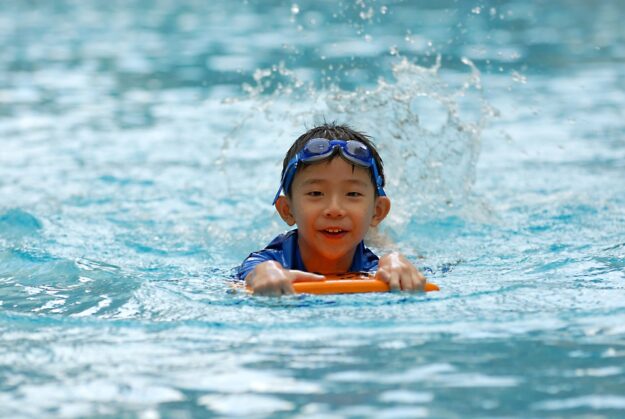Summer Fun: Affordable Activities for Foster Families
Summer is here, and you know what that means – six weeks of finding ways to entertain your foster kids. You may already have a jam-packed holiday calendar at the ready, but if you’re scratching your head for ideas on how to make this summer one to remember without leaving your wallet empty, we’re here to help!
Join us as we explore affordable family activities that will prevent the ‘I’m bored’ groans and help you build shared memories that will last a lifetime.

Why planning summer activities is important
For many children, the summer holidays are exciting – no school, a break from their usual routine, and the chance to go to bed a little later. But for foster children, who are living with the trauma of their past experiences and the upheaval of moving into care, a summer of unknowns awaits. This can be daunting, or even frightening, for children who rely on their term-time routine to feel safe.
However, planning summer activities for kids in your care ahead of time and creating a summer holiday routine can help put them at ease because they’ll know what’s going to happen and when.
Not only that, but activities, no matter how big or small, will enrich their lives and give them a chance to have a carefree summer doing things they may have never had the opportunity to do before. They can also help them to explore their interests, form stronger bonds with you and turn summers into something to look forward to.

Things to do this summer with foster kids
When you foster with FCA, you receive a generous fostering allowance, some of which is earmarked for activities with children in your care. However, it’s still a good idea to be mindful of where and how you spend your money, so you can make it go even further.
Knowing what your foster child has been through, it’s only natural that you would want to give them unforgettable experiences. But that doesn’t mean they need to go on expensive day trips all summer to have fun and create special memories. Given the chance, children can find joy in the simplest and most affordable activities. It’s not about how much money you spend; it’s about spending quality time together without the distractions of everyday life.
Below are some affordable ideas for summer activities to help you make the most out of this quality time with children in your care.
Foraging for fruit
The UK is laden with blackberry bushes and apple trees. So, if you’re looking for a free summer activity, why not grab a bowl or basket and head out on a foraging walk? You could make it into a game of who can pick the most blackberries or find the ripest apples, before returning home for an afternoon of baking tasty crumbles and pies.
Alternatively, if strawberries are a family favourite, you could head to a local farm and pay by the punnet for strawberries you pick. If you really want to make a day of it, some pick-your-own farms offer activities for children, such as bouncy castles for a small fee and refreshments for the whole family.
Plant a vegetable garden
If you’re looking for a low-cost activity that will last beyond summer, growing your own vegetables with your foster children could be the perfect choice, and easier than you think.
Supermarkets, garden centres, and online stores like Amazon stock vegetable seeds for just a couple of quid. Small garden? You could use an old wooden box or buy a small planting trough instead. And if you really want to commit to harvesting your own veggies, you can usually get a plot at a local allotment for a small yearly fee.
Your foster children will feel a great sense of achievement when it’s time to harvest, and if they struggle to try new vegetables, they may be more inclined to give them a go if they’ve grown some themselves.
Stargazing
On cloudless evenings, there is something incredibly special about lying on the grass or a blanket and just looking up at the stars. There is quite literally an infinite number of things to see up in space, including many constellations that are visible to the naked eye.
The great thing about stargazing is that it can be a learning experience too. You can buy handy guides or download free apps that show you which constellations and planets are easy to see that evening. If you want to make it even more engaging, you could buy a small notebook for your foster child to record what they’ve seen every time you stargaze. You never know, you could help awaken an interest in astronomy and science!
Movie days and evenings
Let’s face it, living in the UK means you’re never guaranteed good weather. So, on drizzly days, you could set up a den in the living room with blankets, pillows, and a few of your child’s favourite snacks and have a movie marathon.
On dry evenings, you could do the same, but in the garden. All you need is your laptop and some twinkly lights, and you’ll be watching your favourite films in the fresh air.
Local parks also often create outdoor cinemas during the summer, so check your local community Facebook pages or websites for updates on what’s happening nearby.
Bedroom makeover
If your foster child is living with you long-term and their bedroom looks a bit tired, summer is the perfect time to give it a makeover. You could spend some time looking online for ideas together, before heading to the shops to choose paint colours and accessories to match.
If they have furniture that’s still in good condition, but they want it to look a bit different, you could turn it into an upcycling project. Just grab some furniture paint and change the doorknobs and it will be as good as new. If you’re really crafty, you could help your foster child make some cushion covers to give their bedroom that final personalised touch.
Community events
Most villages and towns host special events and affordable activities for kids during the summer holidays. Whether it’s a carnival, fete, or fun fair, they are usually free to enter and a great place for your foster kids to build connections with other children in your area.
Local libraries, museums, and galleries also typically organise special summer events, so spend some time researching what’s going on nearby.
What’s great about community activities is that they are usually just a short walk or drive away, saving you money on travel costs too.
Make and take a picnic to park
On days when you just need to get out of the house, parks are a brilliant option and fun for all ages. Some have lakes with pedalos to hire, whereas others have paddling pools and rides to enjoy. Whether you pick a lively park or one in a more serene location, you can’t go to the park for the day without a picnic!
Why not spend the evening before you go cooking up some delicious treats to take with you? Cupcakes, sausage rolls, and mini pizzas all make brilliant picnic food and will give you another low-cost activity to enjoy with your foster child the night before.
Have a summer party
Heatwave forecasted? That’s a good excuse to throw a summer party. You could invite local foster families to join in the fun or just keep it a family-only event to bond.
Whichever you choose, many children in foster care may have never experienced a party before, and if their birthday isn’t for a while, throwing a party just for the sake of it could mean the world to them.
Get the paddling pool out, set up a buffet, and fill your freezer with ice cream. If you have young foster children, party games like pass the parcel and musical statues never get old, and for older children, water fights and karaoke will have you all laughing.
Check our FCA’s calendar of events and activities
At FCA, we host events and affordable kids’ activities throughout the year, so contact your local centre to find out what we have organised. Whether it’s a local trip to the beach, bowling, or our Big Sing Off choir competition, we help you and the children in your care connect with other foster families, have fun, and build memories that last the summer and beyond.
If you’d like more tips about fostering, check out our News & Blogs page, where you can also read real stories from our current foster parents and find out what else is happening at FCA.
Ready to start your fostering journey? Call us on 0800 023 4561 or submit our online enquiry form and we’ll be in touch.

Read more…








